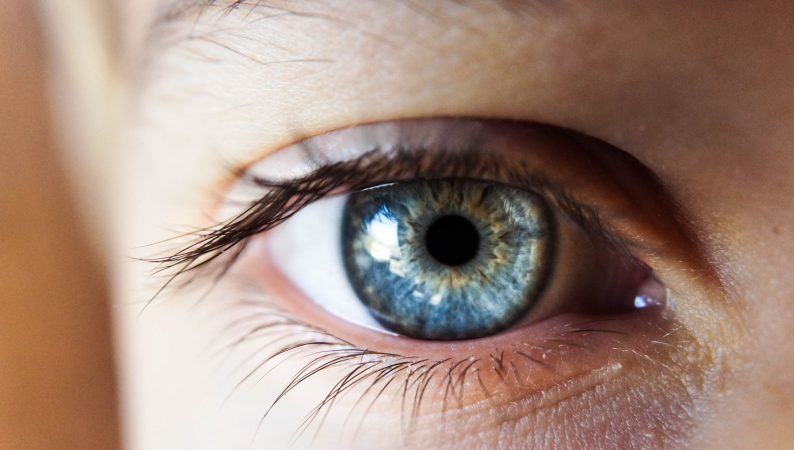I’ve just been diagnosed with sight loss, where can I get advice?
Being told that you have an irreversible vision impairment can be difficult to come to terms with. Some experts have likened initial reactions to bereavement, where people experience ‘stages’ of emotions like shock, anger, denial and, eventually, acceptance. For advice on coming to terms with your sight loss and to find out the next steps, visit RNIB’s online factsheets for the recently diagnosed.
Where can I find out more about my eye condition?
You can find information about various eye conditions, including their symptoms and treatments, on the RNIB website. The information on individual eye conditions is medically checked to ensure it’s as useful as possible.
RNIB website
Why should I register as blind/partially sighted?
Registering as blind or partially sighted simply means recording your sight impairment with your local council. Registration is entirely voluntary, and you will not be denied help from social services if you decide not to, however there are significant advantages.
Registered blind or partially sighted people have access to a wide range of benefits such as the Personal Independence Payment (PIP) and Employment Support Allowance, as well as concessions for the NHS, council tax, television licenses and public transport.
Your registration card can also prove your status as a blind or partially sighted person; particularly important for those who don’t use guide dogs or white canes but may require assistance when out.
Will I be eligible for any benefits?
Being diagnosed with sight loss does not automatically entitle you to welfare benefits, however registering as blind or partially sighted will ensure you have access to any payments for which you are deemed eligible.
The Attendance Allowance, Disability Living Allowance (DLA) and Personal Independence Payment (PIP) are government benefits that help you meet the extra costs associated with sight loss and other disabilities. This includes any care you might require, or assistance to live independently.
PIP is for people between the ages of 16 and 64 while DLA is for those under 16 who have difficulties walking or need more care than a child of the same age who does not have a disability. Attendance Allowance is for people aged 65 and over who do not receive DLA.
Contact the welfare rights team in your local council area for help and advice on claiming benefits. You can also visit an advice centre.
The RNIB has also developed a benefits calculator specifically designed to help blind and partially sighted people, their carers and families find out what benefits they might be entitled to.
You may also be eligible to get free NHS prescriptions, dental treatment, eye tests, and help with other NHS costs. Alternatively, if you have to pay for a lot of prescriptions, it may be cheaper to buy a prescription prepayment certificate.
Check your eligibility or contact your GP for further advice.
Where can I find information about support services such as rehab teams and local support groups?
There are so many support groups working to support blind and partially sighted people at a local, regional and national level, it’s difficult to know where to look.
The Royal National Institute of Blind People (RNIB), the UK’s leading charity for people with sight loss, is a good starting point. Its website is full of useful information on how to come to terms with sight loss and practical ways to live independently.
The RNIB’s helpline is open Monday to Friday from 8.45 am to 5.30 pm. The number is 0303 123 9999, with calls costing no more than a standard rate call to a 01 or 02 number. You can also email the helpline staff at helpline@rnib.org.uk.
Other national charities:
- The Macular Society – helpline: 0300 3030 111 or email: help@macularsociety.org
- Glaucoma UK – helpline: 01233 64 8170 or email: helpline@glaucoma.uk
- Retina UK– helpline: 0300 111 4000 or email: helpline@retinauk.org.uk
- Diabetes UK – helpline: 0345 123 2399 or email: helpline@diabetes.org.uk
- Blind Veterans UK – helpline: 0800 389 7979
Social Care can help people who are elderly or have disabilities. They can help you connect with local neighbourhood groups, and services such as libraries and health and care services.
How do I get around?
Many people with sight loss use white canes when walking to help them locate steps, curbs, streets, driveways, doorways or any obstacles in their path. There are three types of white canes:
- Symbol cane: A symbol cane is used to let others know that you have a visual impairment. These are held, rather than used to find obstacles in your path, and are particularly useful in crowded public places.
- Guide cane: A guide cane is held diagonally across the body to help you find obstacles such as kerbs and steps.
- Long cane: A long cane extends to about two steps ahead of your feet as you walk to help you find your way and avoid obstacles. People who have been trained to use one usually roll or tap it from side to side.
Some blind people prefer to use a guide dog to get around. These dogs are specially trained to move around things, go through doorways, and stop at curbs and stairs. The blind person using the dog is always in charge and must tell the dog what to do.
Is it best to use a white cane or a dog?
This is entirely a matter of personal choice. Some blind people like using canes better, and some enjoy using dogs. No matter your preference, the most important thing is that you can travel as independently as possible.
For more information on Guide dogs, visit: https://www.guidedogs.org.uk/
How can I use a mobile phone?
Most mobile phones these days are very accessible straight out of the box and do not need adaptations for blind or partially sighted people. Although the majority are touchscreen, in-built speech capabilities make them easy to use without needing to see the screen. Androids as well as iPhones are extremely popular, as are a lot of their apps.
How can I tell the time?
Some watches have an open face so a blind or partially sighted person can feel where the hands are in relation to Braille dots at the different hour points. There are also talking watches and clocks that speak the time and have built-in alarms. For people who can read some print, there are also clocks and watches with large print faces. Many blind or partially sighted people also use their mobile phones or computers to check the time.
How do I manage money?
British Pound notes and coins have been designed with accessibility in mind so that they can be easily differentiated by touch. There are also various note gauges and detection devices to help you identify and store cash easily.
For tips on managing cash as a blind or partially sighted person, visit the money section of the RNIB’s website.
How can I play sports and games?
Most sports and games can be adjusted to be made accessible to people with sight loss, and many organisations make it easy to get involved.
Runners can run with a guide to assist with directions, while cyclists can ride tandem with a sighted person to steer the bike. Golfers get assistance to ensure their club head is positioned behind the ball before they swing, and ball games like cricket and football can be played with audible balls. There are even sports that were invented specifically for blind or partially sighted people, such as goalball.
For more details on how to take up sport as a blind or partially sighted person, visit British Blind Sport.
Games are also quite simple to adapt for a blind or partially sighted person. There are Braille versions of decks of cards and board games like Scrabble and Monopoly, and chess, checkers and Backgammon boards can be made tactile too. Yahtzee and other dice games are easy if you use dice with dots that you can feel and count. Not all games have to be made especially for the blind. As for computer games, Spoonbill Software produces computer games that can be played by blind and sighted individuals together. These games are freely distributed on request. Visit the Spoonbill website to find out more.
How do I learn Braille?
To learn Braille, you need to memorise what each of the different combinations of raised dots stand for, and then train your fingers to sense the dots by touch. Most people need lots of practice before they can read Braille quickly, so if your sight is deteriorating, you’re encouraged to start learning as early as possible, even if you can still read some print. There are many different courses available that will make sure you have the basics down pat.
Visit RNIB’s online learning centre to find out more about the Braille courses available.
How do I read?
Blind or partially sighted people can read in several different ways and it all depends on personal preference. Some use Braille, others use a computer, screen reading software or audiobooks.
Braille is a system of raised dots that can be read with your fingers. Good Braille readers, like good print readers, can read much faster than they can talk.
Blind and partially sighted people use Braille to take notes at school and university, write letters, read music, record phone numbers and recipes, and do the other things you might do using print.
The RNIB has the UK’s largest collection of Braille and recorded books and magazines that you can borrow free of charge.
How do I choose clothes?
Most articles of clothing will have at least one distinct element that will allow a blind or partially sighted person to identify them by touch. Different buttons, bows, belts, pockets and textures will usually help you distinguish that red shirt from the blue one, and the grey trousers that go with it.
This method can be problematic when faced with choosing items that feel the same – like ties – so some people like to mark their clothes in a special way to tell them apart. This can be as simple as attaching a safety pin to the lining, sewing in a Braille label, or using colour identifiers. You could also make a list of the suits, shirts, ties, and other clothes that feel alike and match them with each other using Braille numbers and letters attached to each piece of clothing.
When out shopping for clothing, ask the staff to describe the item(s) so you can learn how they look and how they feel so you’ll know exactly how they fit in your wardrobe.
How can I tell the contents of a can or package?
Each blind or partially sighted person will have his or her way of identifying or labelling different products. Some packages are easily identifiable by touch or smell, but most blind or partially sighted people will rely on some Braille or audio labelling to organise their kitchen. There are also smartphone apps that will scan a package or can and read the contents aloud.
How do I shop for groceries?
Fruits, vegetables and other fresh produce items are usually identifiable by touch, it’s when you arrive in the packaged aisles of the supermarket that tins, boxes, cans and containers can present more of a problem. Many blind or partially sighted people like to shop with a friend, volunteer or store employee who can read the different brands and types aloud and help them find things.
How do I cook?
Cooking can seem like a daunting task for blind and partially sighted people, but it’s perfectly achievable with a few adaptations. Talking appliances can be a great help, but blind people can also use the same gas or electric ovens, microwaves, blenders, electric knives, skillets, and slow cookers as the sighted use. Use Braille or marking glue to label touch buttons and temperature dials and invest in measuring utensils that are different sizes (rather than marked) to work out portions. Colour and contrast can make things easier during prep time, as it’s easier to find light colour food on a dark chopping board, and darker food on a light board.
Smell, sound, temperature, timers, texture and consistency will help you judge how your food is cooking. If you’re recently blind or your sight is deteriorating, there are special training programs to help you learn to cook without your sight.
Visit RNIB’s Cooking page for more tips on preparing food.
What sort of equipment can help me in the workplace?
There is a whole range of equipment designed to help people with sight loss live and work more independently. To find the right tools for the job, you’ll need to consider your eye condition, your abilities, as well as certain lifestyle factors.
Will I be able to keep my job?
Losing your sight does not necessarily mean losing your job. In fact, blind and partially sighted people excel in many of the careers that sighted people do. You may need to adjust the way you perform your duties, but with the right tools and guidance, many employees can continue in their roles despite changes to their vision.
For help and advice on continuing to remain employed, visit RNIB’s Employment page.
Can I still use public transport?
Public transport can be a great option for a blind or partially sighted person to get around independently. Many local organisations offer free training programmes that will teach you how to plan your journey, hail a bus and give you the skills to use public transport with confidence. Train operators across the UK provide guided travel assistance for people with sight loss or other disabilities, although most require advanced notice.
Visit the RNIB’s website for more information and first-hand accounts of traveling as a blind or partially sighted person.



